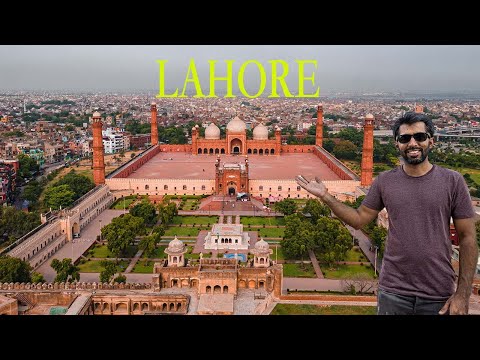
Lahore, the capital city of the Punjab province, is not only the second-largest city in Pakistan but also a pivotal cultural and historical hub. Often referred to as the “Heart of Pakistan,” Lahore has been a center of civilization for centuries, offering a splendid array of heritage, arts, culinary delights, and vibrant festivals. This article delves into the historical significance and cultural richness that define this iconic city.
### Historical Significance
The history of Lahore stretches back over a millennium. It is believed to have been founded by Loh, son of Rama, the hero of the Hindu epic Ramayana. The reality, however, is that Lahore has had various rulers ranging from Hindu Shahis in 1000 AD to the Ghaznavids followed by others including Mughals and Sikhs before becoming part of British India.
Under Mughal rule from about 1524 to 1752, Lahore reached its cultural zenith. Magnificent structures such as the Lahore Fort and Shalimar Gardens were built during this period; both are now UNESCO World Heritage Sites. The city was later taken over by the Sikh Empire and then by the British before becoming an important city in independent Pakistan.
### Architectural Marvels
Lahore is studded with architectural wonders dating back several centuries. The Lahore Fort encapsulates a lengthy chronicle all by itself—with its origins shadowy but certainly ancient, restructured in grand style by Emperor Akbar in 1566. Its allure includes myriad palaces, halls such as Sheesh Mahal (Palace of Mirrors), and mosques within its complex showcasing a fusion of Islamic and Hindu architectural influences over different epochs.
Another emblematic structure is Badshahi Mosque—built by Emperor Aurangzeb in 1673—it remains one of the largest mosques in the world known for its vast prayer hall and intricate calligraphy.
### Cultural Melting Pot
Lahore exudes an eclectic cultural charm influenced greatly by its historical transformations through time. The city is often synonymous with Pakistani literature and arts hosting numerous literary festivals like the Lahore Literary Festival which attracts international scholars and enthusiasts alike.
The realm of performing arts thrives robustly here; Lahore is considered the birthplace of Pakistani cinema with Lollywood’s roots deep within its locales. Traditional music forms such as Qawwali have strong connections with this region too.
### Culinary Delights
Culinary experiences in Lahore are profoundly rich—reflecting generations’ worth culinary traditions fused subtly with modern tastes. From street food markets like those at Gawalmandi and Liberty Market to high-end restaurants serving a mélange of local and international cuisines—all depict gastronomical journeys through taste buds! Dishes such as Biryani, Nihari, Lahori Fried Fish or traditional sweets like Gulab Jamun present just snippets from an extensive menu offered across Lahori kitchens.
### Festivals & Celebrations
Lahore annually hosts vibrant celebrations including Basant Festival where participants playfully engage in kite-flying competitions while welcoming spring—a festival now banned but nostalgic among locals; Eid festivities light up every corner with joyous spirits; Ramadan nights at Data Darbar showcase spiritual bliss among fasting observers breaking their fast together under divine skies.
### Conclusion
Today’s Lahore is a bustling metropolis that has managed to retain its historic charm while embracing modernity gracefully—a city where past meets present at every corner through timeless architecture art culinary traditions or festive celebrations transforming it into an eternal canvas painting narratives from era’s lost yet remembered famed rightfully as “The Heart Of Pakistan”.
